- News
- Reviews
- Bikes
- Accessories
- Accessories - misc
- Computer mounts
- Bags
- Bar ends
- Bike bags & cases
- Bottle cages
- Bottles
- Cameras
- Car racks
- Child seats
- Computers
- Glasses
- GPS units
- Helmets
- Lights - front
- Lights - rear
- Lights - sets
- Locks
- Mirrors
- Mudguards
- Racks
- Pumps & CO2 inflators
- Puncture kits
- Reflectives
- Smart watches
- Stands and racks
- Trailers
- Clothing
- Components
- Bar tape & grips
- Bottom brackets
- Brake & gear cables
- Brake & STI levers
- Brake pads & spares
- Brakes
- Cassettes & freewheels
- Chains
- Chainsets & chainrings
- Derailleurs - front
- Derailleurs - rear
- Forks
- Gear levers & shifters
- Groupsets
- Handlebars & extensions
- Headsets
- Hubs
- Inner tubes
- Pedals
- Quick releases & skewers
- Saddles
- Seatposts
- Stems
- Wheels
- Tyres
- Health, fitness and nutrition
- Tools and workshop
- Miscellaneous
- Cross country mountain bikes
- Tubeless valves
- Buyers Guides
- Features
- Forum
- Recommends
- Podcast
review
 Cervelo R5 Force eTap AXS
Cervelo R5 Force eTap AXS£8,599.00
VERDICT:
Fantastically fast all-rounder that also delivers impressive amounts of comfort
Excellent handling
Super comfortable
No detectable flex
Easily adjustable cockpit
Power meter included
Expensive
Not superlight
Weight:
7,540g
Contact:
At road.cc every product is thoroughly tested for as long as it takes to get a proper insight into how well it works. Our reviewers are experienced cyclists that we trust to be objective. While we strive to ensure that opinions expressed are backed up by facts, reviews are by their nature an informed opinion, not a definitive verdict. We don't intentionally try to break anything (except locks) but we do try to look for weak points in any design. The overall score is not just an average of the other scores: it reflects both a product's function and value – with value determined by how a product compares with items of similar spec, quality, and price.
What the road.cc scores meanGood scores are more common than bad, because fortunately good products are more common than bad.
- Exceptional
- Excellent
- Very Good
- Good
- Quite good
- Average
- Not so good
- Poor
- Bad
- Appalling
Cervelo's R5 is an excellent all-rounder. For everything from long and steep climbs to big rides over questionable surfaces, it's sufficiently light and supremely comfortable. The aero touches and stiff frame meant I was equally happy pacing around the flat and sprinting up short climbs. Of course, there are lighter and more aero bikes, but the blend of qualities here is just so.
I have to say, I wasn't blown away when I was first setting up the Cervelo R5. In my hands, sure, it wasn't at all heavy, but equally, it didn't quite have that feathery feel of a build that plays around the 6.8kg UCI weight limit. Once I was out and rolling, though, the R5 quickly began to show how wrong I was to take just one metric and focus on that in isolation.
> Buy now: Cervelo R5 Force eTap AXS for £8,599 from Wheelbase
Plump but quick rolling tyres and a super-comfortable seatpost made for a smooth – and, ultimately, fast – ride over the coarse tarmac of South Wales' most significant climbs. On the ungodly steep ramps of the smaller roads, where I'm searching for every watt, I was thankful for just how direct the power transfer felt – particularly the lack of flex around the head tube.
Of course, if you were riding a bike a kilo lighter, you'd likely come back with even more flattering times, but there's plenty the R5 still has left to offer.
On the way back down those hills, for me, the handling was spot on. The movements of my hips translated exactly to the lines I wished to take – the results were immediate, yet still with the feeling of being in complete control. Although one caveat to the excellence of the geometry for descending is that the relatively short front centre leads to some pretty significant toe overlap on tighter switchback climbs.
Although not an aero bike, it's still a pleasure ticking over at higher speeds. On a trip back to the more rolling terrain of Sussex, it didn't feel like a constant fight keeping the pace up – and would have been faster still with a set of deeper wheels. Of course, if you really wanted to maximise speed on the flat, you'd go for a different bike, but it's nice to still get a flavour of that on just the one.
And although not a plodding endurance bike, the ease with which it's possible to adjust the stem height and the exceptional comfort from that D-shaped seatpost has meant I've been more than happy on the R5 for rides up to six hours.
Frame
Cervelo claims that the new R5 is 130g lighter than the previous model, with a claimed weight of 703g in a size 56cm. This is impressively light, although not boundary pushing – not many frames slip in under the 700g mark, but there are a few.
The other big change from the previous iteration regards the stiffness. I didn't ride that model, but David Arthur said: 'For the most part it's reasonably smooth, but get onto a patch of broken tarmac and it struggles to soak up the vibrations and sends the shocks through to the contact points.'
Addressing those criticisms, Cervelo has reworked the fork to retain its lateral stiffness while dialling back the longitudinal stiffness. Presumably the new fork helps soak up some of the vibrations that would otherwise travel through the cranks to your pedals and feet.
The seatpost itself is super flexy too – just resting my arm on it makes it move noticeably.
Additional cushioning can be provided by the tyres, with widths of up to 34mm able to be accommodated by the generous clearances.
The bottom bracket area, though, is quite overbuilt to minimise flex when pedalling and it still uses a press-fit interface rather than a switch back to threaded – as some brands are doing.
Being a race bike, the front end is pretty low at 547mm in a size 54cm. That's 1mm higher than the Canyon Ultimate but 10mm lower than the Merdia Scultura – so quite aggressive for a climbing bike.
The reach, on the other hand, is notably short at just 380mm (Ultimate 385mm; Scultura 395mm). Combined with the steep 73-degree head angle, this leads to a fairly significantly degree of toe overlap. Naturally there are things you can do – shorter cranks and longer stems – but this is the canvas you're working from.
With 410mm chainstays, the rear end is pretty middle of the road for race bikes, which tend to sit in the range of 405-415mm. However, the seat angle is notably slack at 73 degrees.
Cervelo does have its own particular views on bike geometry and there's no way of really knowing how it will all come together before simply riding it. My experience was that everything meshed brilliantly, just with the proviso that I had to be careful of the position of my cranks on the tightest switchbacks.
Groupset
Cervelo has made the pretty bold move of designing the frame to be electronic groupset only, something we will probably be seeing more of on race models.
All the components we have here are from SRAM's second-tier Force line, with hydraulic braking and 160mm rotors front and rear, as well as a crankset-based power meter as standard.
The gearing is 48/35t chainrings with a 10-33t 12-speed cassette, giving a huge amount of range. To put that into perspective, the top gear is larger than a 52x11 combination, while the bottom gear also manages to be smaller than the 34x32 combination typical of a generously geared endurance bike.
The 10-33t 12-speed cassette also manages to cram in more single-tooth jumps than you get on a racing 'classic' 11-28t 11-speed cassette. This makes the jumps between more of the gears that bit smaller and therefore smoother. At least, for the most part. The jump between the second largest 28t sprocket and final 33t sprocket is pretty massive – but I can't complain as every time I've reached for it I've been very much glad to have it.
Wheels and tyres
The wheels are the Reserve 34/37s which have differing rim heights of (no prizes for guessing) 34mm at the front and 37mm for the rear. The set comes with a claimed weight of 1,300g, which is really quite light, although again, not boundary pushing.
Along with the depth, the internal rim width varies between the wheels as well, the front being really quite wide at 24mm and the rear a more modest 22mm. Together, the differing rim profiles are supposed to provide a better balance between stability, weight, and optimal aerodynamics.
They are fairly shallow, but still provide an aerodynamic boost and you benefit from not being pushed about as much as you would in crosswinds if you were riding deeper section wheels. This is definitely something I appreciated on exposed roads; as a lighter rider the differences can be more obvious – for the better in this case.
Wrapping the wheels are a pair of Vittoria Corsa G2.0 tyres in a nominal 25mm width, although they measured up to bang on 28mm at the rear and fractionally wider still at the front, thanks to those roomy internal rim widths.
Like the rims, the tyres are tubeless ready for lower rolling resistance and added defence against punctures. The bike came set up with inner tubes and I didn't swap them out for sealant, yet I still never punctured. Considering the roads that some of my 'optimistic' route planning has led me down, that is quite an impressive track record.
Finishing kit
Up front is Cervelo's own HB13 Carbon handlebar paired with an ST31 Carbon stem. The first thing to mention is that, although the cable routing is entirely hidden, the cables actually run in a groove in the handlebar, rather than being threaded internally, while the headset spacers are split and can be stacked on top of the stem.
Being able to easily adjust the stack height without cutting or bleeding anything would have gone without saying on most bikes half a decade ago – but for the current crop of race bikes this is one of the better designs.
The ergonomics of the bar, with its 80mm reach and 123mm drop, are quite compact, but not unusually so. The flattened tops of the bar might well save a little drag, but do stop you from playing around with the roll of the handlebar, though this didn't really need that kind of tweaking.
I've already talked about the seatpost, with its significant degree of flex that you can literally see when resting your arm on it. Perched on top is Prologo's short and rounded Scratch M5 PAS TiRox saddle.
Its padding is separated into five zones, with the foam density tailored in each for optimal support, while the fairly long central cutout helps with relieving pressure and promoting blood flow to prevent numbness and discomfort.
Value
Priced at £8,599, this is certainly an expensive option for a bike built up with SRAM Force eTap AXS.
> Ultimate superbikes: 13 of the world's most expensive road bikes
Specialized's ultra-light Aethos Pro is specced with the same groupset but costs £699 less at £7,900 (we tested the Shimano Ultegra Di2 model in 2020).
Giant's TCR Advanced Pro 0 Disc AX has a very similar spec for just £5,599 – as does Canyon's Ultimate CF SLX 8 Disc eTap, which costs £5,149.
Conclusion
The Cervelo R5 is expensive, even for a bike of this spec level. It's also not ultra light – if striving for the minimum mass weighs most heavily on your mind, you'd likely be happier on a Specialized Aethos or Canyon Ultimate. But as a genuine all-rounder that's quite easy to live with, the R5 stands out.
Verdict
Fantastically fast all-rounder that also delivers impressive amounts of comfort
road.cc test report
Make and model: Cervelo R5 Force eTap AXS
Size tested: 54
About the bike
List the components used to build up the bike.
Frame – Cervelo R5 all-carbon, disc brake compatible, 12mm x 100mm / 142mm thru-axle (F/R), internal brake hose routing
Fork – Cervelo R5 all-carbon, tapered steerer tube
Headset – FSA IS2 1-1/4 x 1-1/2
Bottom Bracket – SRAM DUB, BBright press-fit format
Stem – Cervelo ST31 Carbon, with internal brake hose/cable routing
Handlebar – Cervelo HB13 Carbon, with internal brake hose/cable routing
Front Brake – SRAM Force HRD, hydraulic disc brake caliper with SRAM Paceline 160mm rotors
Rear Brake – SRAM Force HRD, hydraulic disc brake caliper with SRAM Paceline 160mm rotors
Brake Levers – SRAM Force eTap AXS HRD, hydraulic
Front Derailleur – SRAM Force eTap AXS, 12-speed
Rear Derailleur – SRAM Force eTap AXS, 12-speed
Shift Levers – SRAM Force eTap AXS HRD, 12-speed
Chain – SRAM Force, 12-speed
Cassette – SRAM Force XG1270, 10-33, 12-speed
Crankset – SRAM Force AXS 48/35, with power meter
Front Wheel – Rim: Reserve full carbon, 34mm deep, 22.6mm internal width, tubeless-ready / Hub - DT370, Center Lock, 12mm x 100mm thru-axle / Spokes - x20
Rear Wheel – Rim: Reserve full carbon, 37mm deep, 21.6mm internal width, tubeless-ready / Hub - DT370, XDR freehub, Center Lock, 12mm x 100mm thru-axle / Spokes - x24
Front Tyre – Vittoria Corsa TLR G2.0 25c, tubeless-ready
Rear Tyre – Vittoria Corsa TLR G2.0 25c, tubeless-ready
Saddle – Prologo Scratch M5 PAS Tirox
Seatpost – Cervelo SP24 Carbon Aero
Tell us what the bike is for and who it's aimed at. What do the manufacturers say about it? How does that compare to your own feelings about the bike?
The Cervelo R5 is designed as a World Tour-level climbing bike. It's aimed at those seeking top performance, with money no object, mostly – in this SRAM Force spec, it's still got one eye on value, along with results.
Cervelo says: 'R5 has one job''get to the top, fast. But for all the glory and fanfare that comes with a summit finish, they're rarely the only climb of the day. And while a race isn't usually won on a descent, they can certainly be lost. A climbing bike that can't carve a hairpin is a bit like a cup of decaf coffee. This is the fourth iteration of the R5, and while weight and stiffness have varied over the years, the handling, poise, and unmatched prowess on a descent have been consistent since day one.'
My experience was that Cervelo has hit its intention pretty much spot on. The R5 offers a particular blend of all-round performance. It is expensive, but it's still not the priciest and you can see where much of the money is going.
Where does this model sit in the range? Tell us briefly about the cheaper options and the more expensive options
With the bike only compatible with electronic groupsets, and with there being no SRAM Rival option, this model technically sits at the bottom of the range alongside the Shimano Ultegra Di2 build. Perhaps more helpful is to say that this model is second from top, with only SRAM Red and Shimano Dura-Ace models above it.
Frame and fork
Overall rating for frame and fork
9/10
Tell us about the build quality and finish of the frame and fork?
The frame blends a low weight (claimed at 703g) with a high degree of lateral stiffness – I couldn't detect any flex when sprinting or climbing. That said, the ride was still super comfortable, with the fork and seatpost soaking up the bumps. My only criticism is that the geometry of the frame and fork lead to a lot of toe overlap with the front tyre.
Tell us about the materials used in the frame and fork?
Carbon fibre is used for both the frame and the fork.
Tell us about the geometry of the frame and fork?
The head angle is quite steep at 73 degrees and likely contributes to the toe overlap. Despite this, when descending and cornering at speed, the R5 feels like it's on rails. There's no single measurement that will fully explain a bike's handling, but the moderate length of the chainstays at 410mm and 72mm BB drop will play a part.
How was the bike in terms of height and reach? How did it compare to other bikes of the same stated size?
The front end is quite low for a climbing bike, but the reach a little short.
Riding the bike
Was the bike comfortable to ride? Tell us how you felt about the ride quality.
For a racing bike, the R5 is extremely comfortable, helped most notably by the extremely flexy seatpost. But the plumped out tyres certainly help smooth the bumps as well.
Did the bike feel stiff in the right places? Did any part of the bike feel too stiff or too flexible?
The stiffness and compliance are kept to all the right places. I didn't feel jarred by high-frequency vibrations rattling up through the fork, but at the same time, when putting in all-out efforts, I didn't feel any flex around the bottom bracket or the head tube.
How did the bike transfer power? Did it feel efficient?
The power transfer feels very efficient, not just in the solidity of the frame, but also in the smoothness with which the bike rolls over even coarser tarmac. It feels fast and like no effort is being wasted.
Was there any toe-clip overlap with the front wheel? If so was it a problem?
There was a fairly large degree of toe overlap. It wasn't a problem for high speed riding and descending, but on slow switchback climbs with tight corners I did have to watch out for my crank position when steering.
How would you describe the steering? Was it lively neutral or unresponsive? Lively yet controlled.
Tell us some more about the handling. How did the bike feel overall? Did it do particular things well or badly?
The bike only needed a shift of my weight or a flick of my hips to elicit a change in line. But for that, it still felt fully controlled, not twitchy at all and only making the moves I wished it to. And when I did wish, it did them fast.
Which components had the most effect (good or bad) on the bike's comfort? would you recommend any changes?
The seatpost has the most significant effect on the comfort, being notably flexy. Also the wide rims really plump out the tyres too. I don't feel like any changes are necessary to make the bike more comfortable.
Which components had the most effect (good or bad) on the bike's stiffness? would you recommend any changes?
It's the frame and the beefy overbuilt bottom bracket that have the greatest effect on the bike's stiffness. Again, I see no reason to change anything to do with this, it was more than sufficiently stiff for me.
Which components had the most effect (good or bad) on the bike's efficiency? would you recommend any changes?
The wheels and tyres probably make the greatest impact regarding the efficiency. Lightweight, they didn't hold me back on the hills, while the shallow section still provides enough of an aerodynamic boost to make pacing along the flat fun rather than a struggle.
Rate the bike for efficiency of power transfer:
9/10
Rate the bike for acceleration:
9/10
Rate the bike for sprinting:
8/10
Rate the bike for high speed stability:
9/10
Rate the bike for cruising speed stability:
9/10
Rate the bike for low speed stability:
5/10
Rate the bike for flat cornering:
9/10
Rate the bike for cornering on descents:
9/10
Rate the bike for climbing:
9/10
The drivetrain
Rate the drivetrain for performance:
9/10
Rate the drivetrain for durability:
9/10
Rate the drivetrain for weight:
8/10
Rate the drivetrain for value:
8/10
Tell us some more about the drivetrain. Anything you particularly did or didn't like? Any components which didn't work well together?
The 48/35 and 10-33t combination is a pretty perfect match for essentially every ride you'd be likely to do on the bike. If you're concerned about chain articulation (how the links of the chain bend to wrap around rings and sprockets) from a big ring smaller than 53t, I'd really hope you're already able to push at least 375W for an hour at sea level.
Wheels and tyres
Rate the wheels for performance:
8/10
Rate the wheels for durability:
8/10
Rate the wheels for weight:
8/10
Rate the wheels for comfort:
9/10
Rate the wheels for value:
8/10
Tell us some more about the wheels.Did they work well in the conditions you encountered? Would you change the wheels? If so what for?
The wheels have a claimed weight of 1,300g and are a fairly shallow section. They feel like the perfect balance between low weight and aero for the build – you could get better performance if you were willing to pay a whole lot more.
Rate the tyres for performance:
9/10
Rate the tyres for durability:
9/10
Rate the tyres for weight:
9/10
Rate the tyres for comfort:
9/10
Rate the tyres for value:
8/10
Tell us some more about the tyres. Did they work well in the conditions you encountered? Would you change the tyres? If so what for?
The Vittoria Corsa TLR G2.0s are fast rolling, grippy and impressively puncture resistant. I took the bike on some pretty questionable roads but never suffered a puncture.
Controls
Rate the controls for performance:
8/10
Rate the controls for durability:
9/10
Rate the controls for weight:
8/10
Rate the controls for comfort:
9/10
Rate the controls for value:
8/10
Tell us some more about the controls. Any particularly good or bad components? How would the controls work for larger or smaller riders?
The SRAM Force shifters have been around for a while. They're easy to operate and the shifting is quite fast. The only real criticism about the controls is that in pressing both levers to change gear, you can't simultaneously shift at the cassette.
Your summary
Did you enjoy riding the bike? Yes
Would you consider buying the bike? Yes
Would you recommend the bike to a friend? Yes
How does the price compare to that of similar bikes in the market, including ones recently tested on road.cc?
It is more expensive than similarly specced options from Specialized, Giant and Canyon, but it's an exceptional all-rounder, which adds value.
Rate the bike overall for performance:
9/10
Rate the bike overall for value:
5/10
Use this box to explain your overall score
There are bikes which do perform better in certain regards, whether that's comfort, climbing or sprinting. But the R5 stood out in being adept in every department. It's an exceptional all-rounder. Although it is quite expensive for the spec, considering its performance, the value is still rather good.
About the tester
Age: 24
I usually ride: Road bike My best bike is:
I've been riding for: 10-20 years I ride: Every day I would class myself as: Expert
I regularly do the following types of riding: road racing, cyclo cross, commuting, touring, club rides, sportives, general fitness riding, Gravel riding, indoor turbo and rollers, track
Anna has been hooked on bikes ever since her youthful beginnings at Hillingdon Cycle Circuit. As an avid road and track racer, she reached the heady heights of a ProCyclingStats profile before leaving for university. Having now completed an MA in Multimedia Journalism, she’s hoping to add some (more successful) results. Although her greatest wish is for the broader acceptance of wearing funky cycling socks over the top of leg warmers.
Latest Comments
- Terry Hutt 1 sec ago
Those models aren't miserable etc. They're hungry.
- Hirsute 4 hours 29 min ago
This can work - might need longer bolts. https://www.sjscycles.co.uk/lighting-spares/madison-universal-light-moun...
- Bungle_52 7 hours 6 min ago
This was a failure to give way at a roundabout so although it was relatively straightforward to anticipate and avoid there is traffic law to...
- chrisonabike 7 hours 14 min ago
Ah - I have now read Wikipedia on loons, and perhaps I can understand their objections:...
- wtjs 8 hours 27 min ago
she questioned what Police Scotland is doing to "deter dangerous driving and protect cyclists"...
- wtjs 8 hours 36 min ago
I've got a few reports coming up to one year where I've been told that they will take action but I don't know what action yet. I'll let you know...
- chrisonabike 8 hours 49 min ago
I feel Flintshire Lad's response - "A LABOUR councillor (candidate)!"...
- stonojnr 11 hours 8 min ago
I'm not sure the UCI worlds are on the protected sports list, as surely CX & MTB would be shown too, the Beeb probably just acquire it as part...
- bikeman01 11 hours 49 min ago
Re-deployed on Twitter duty?






































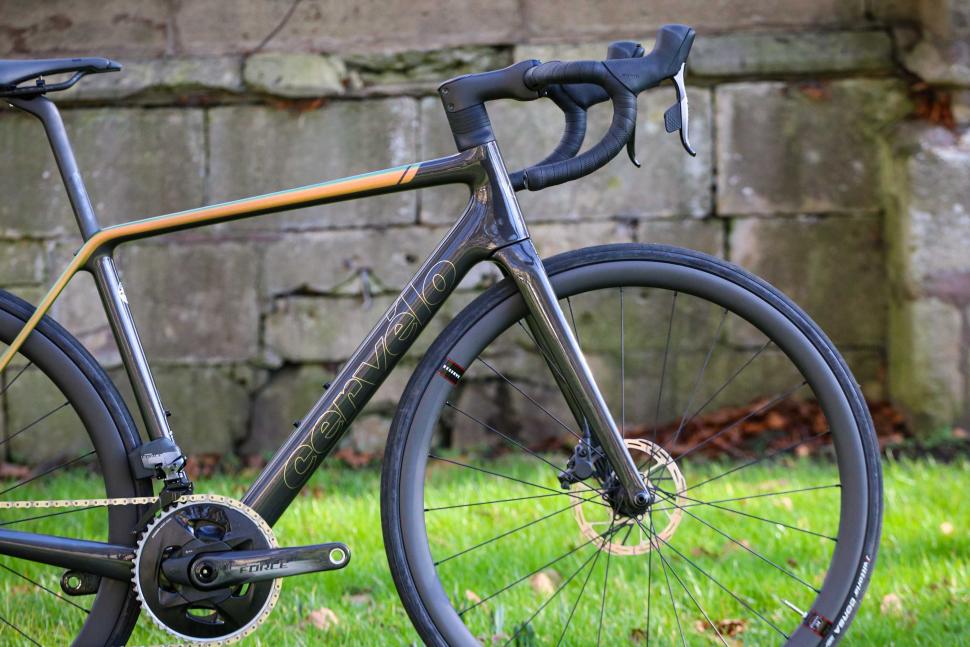
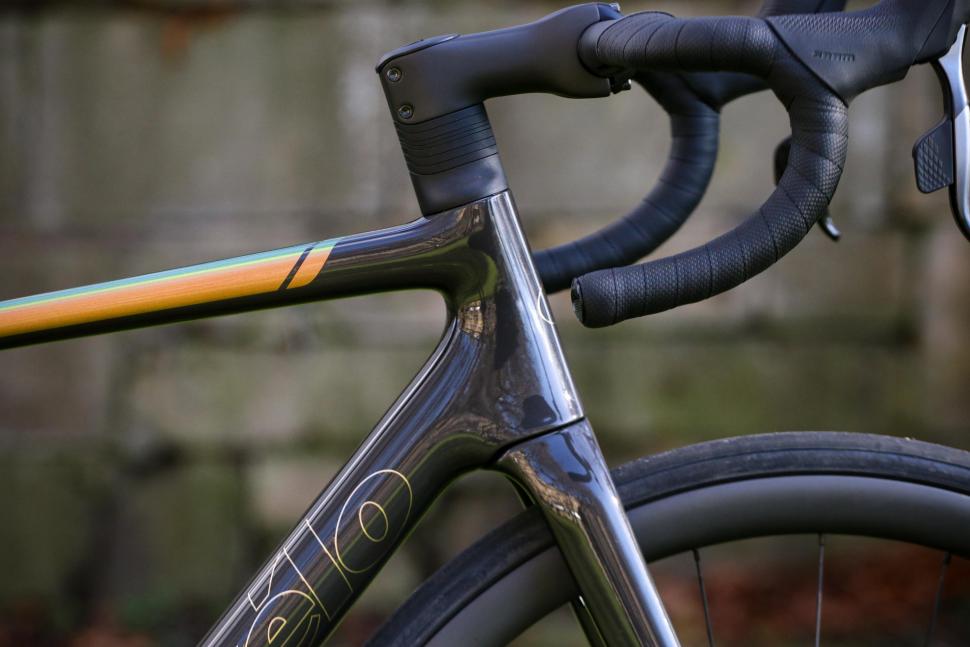
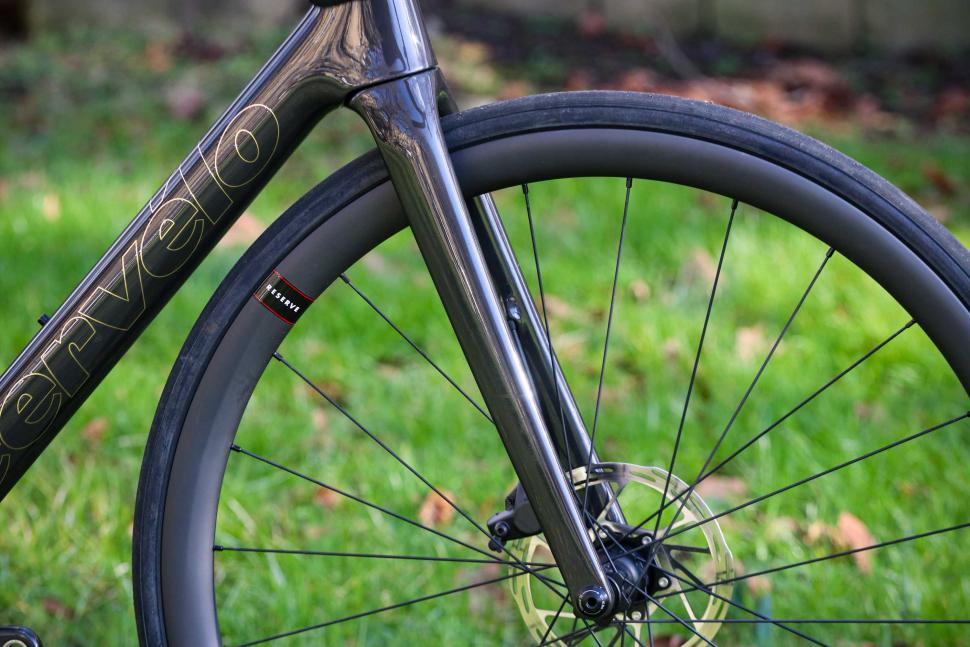

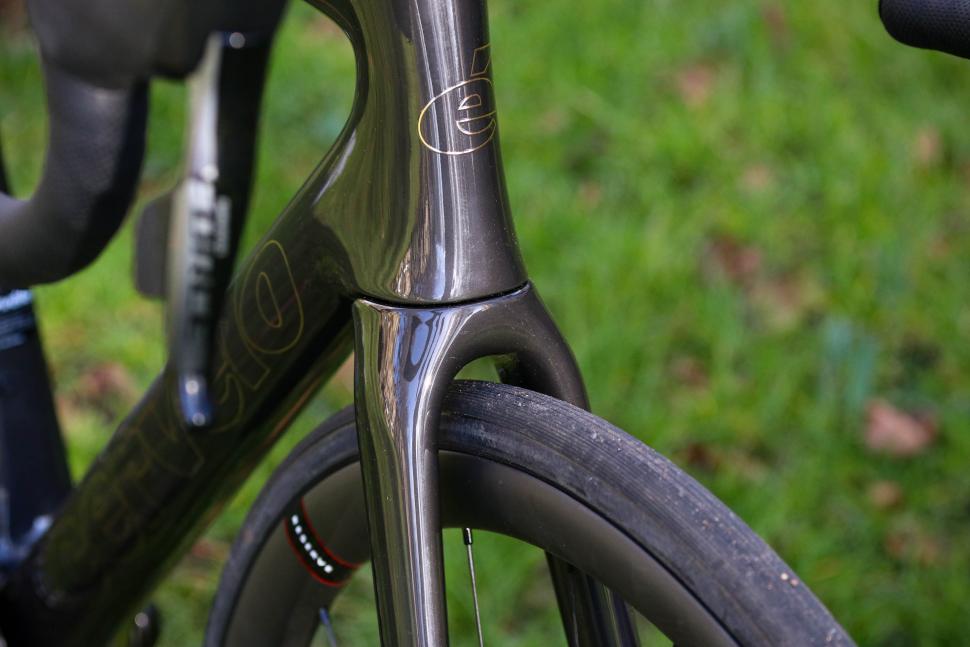
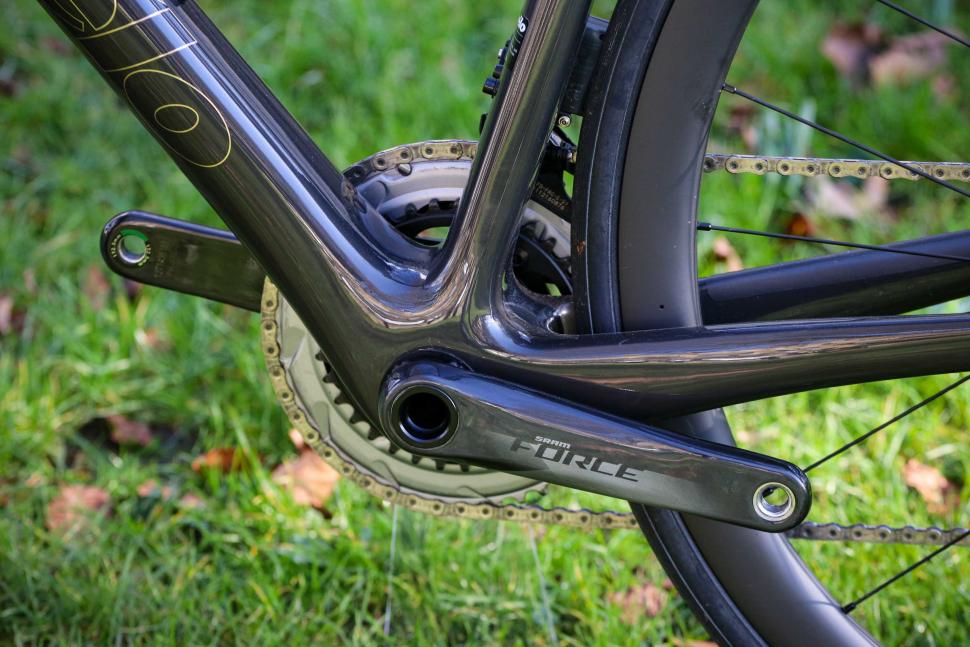
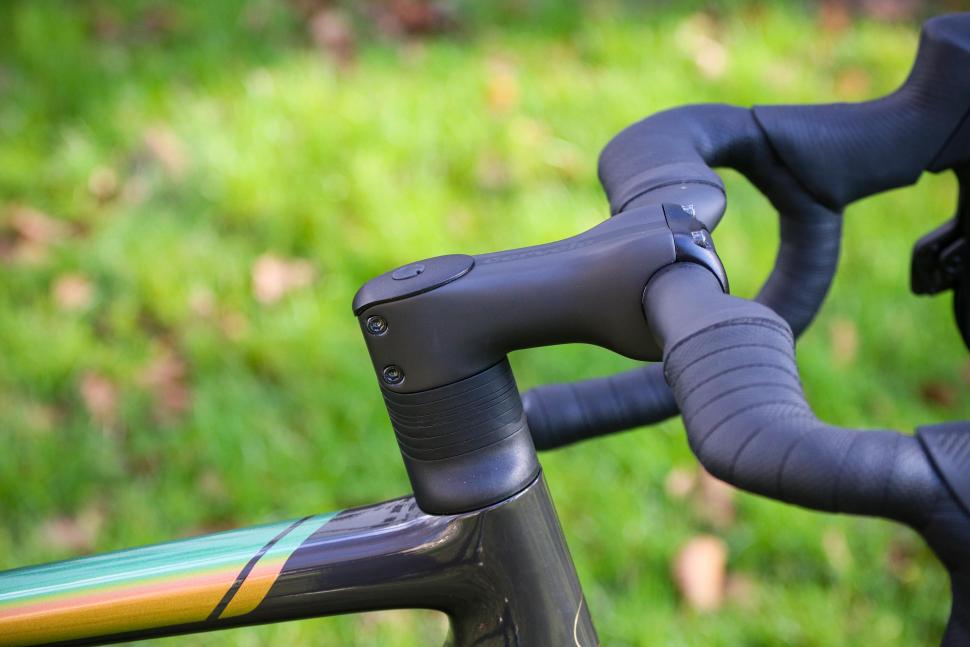
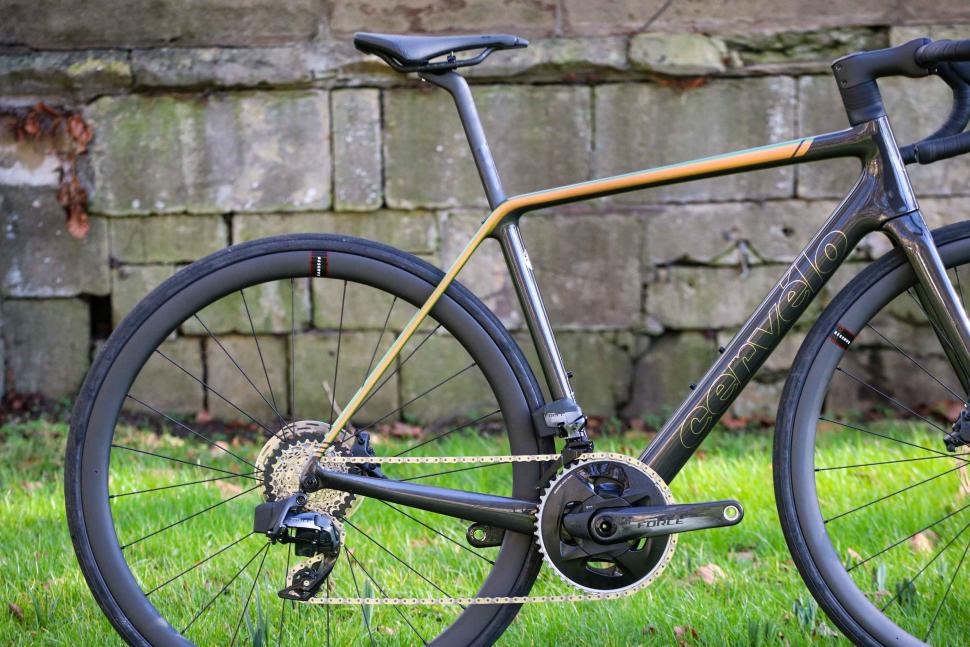

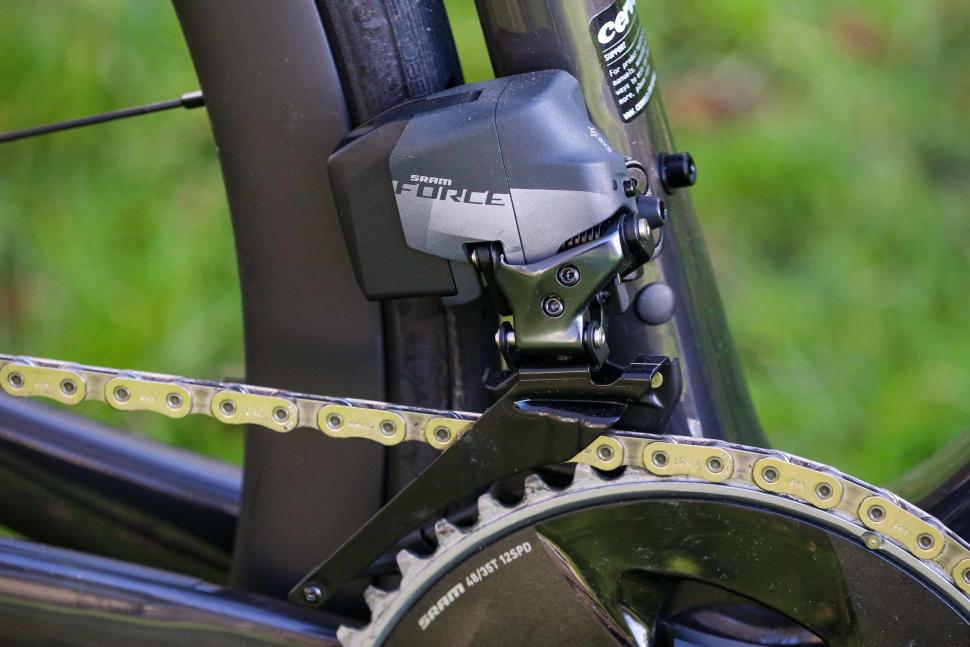
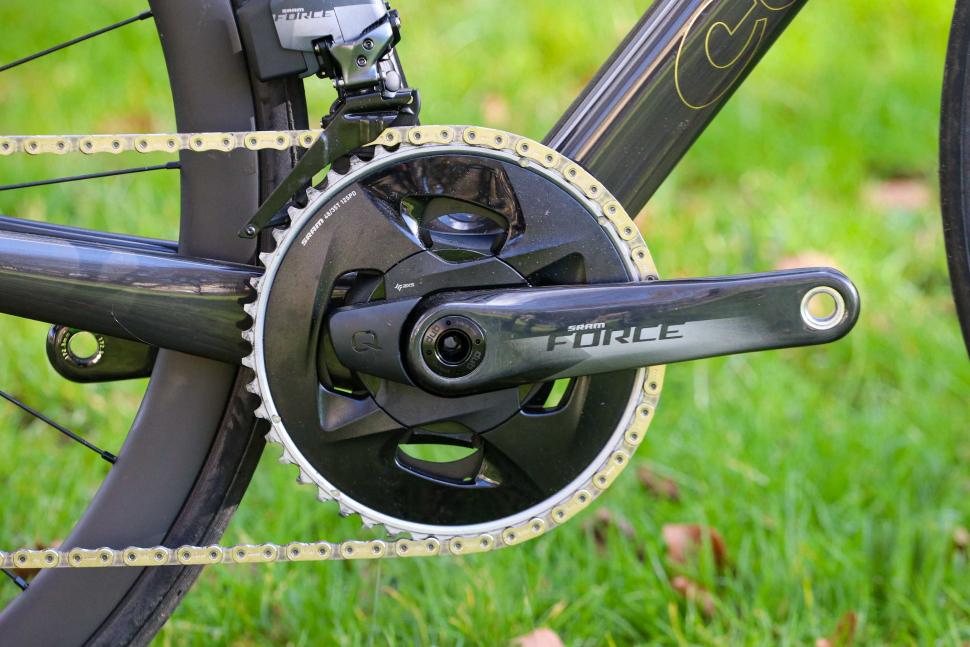
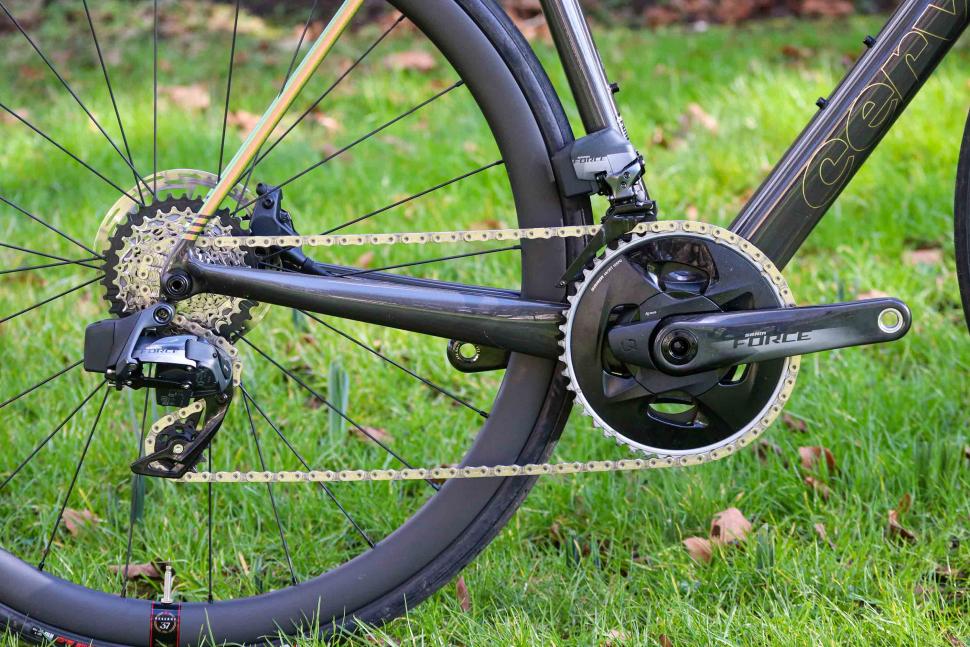
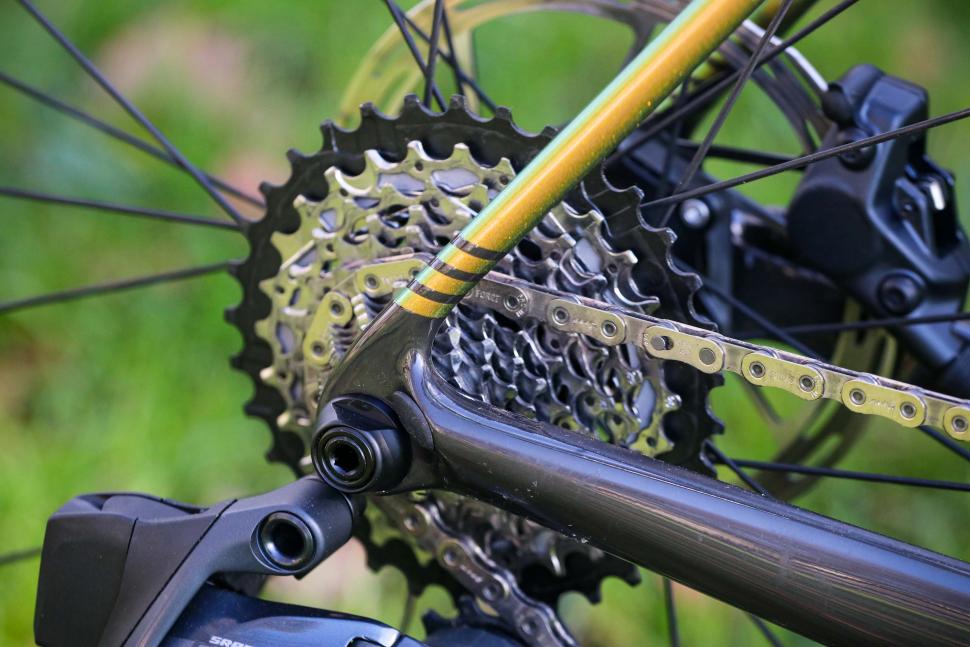

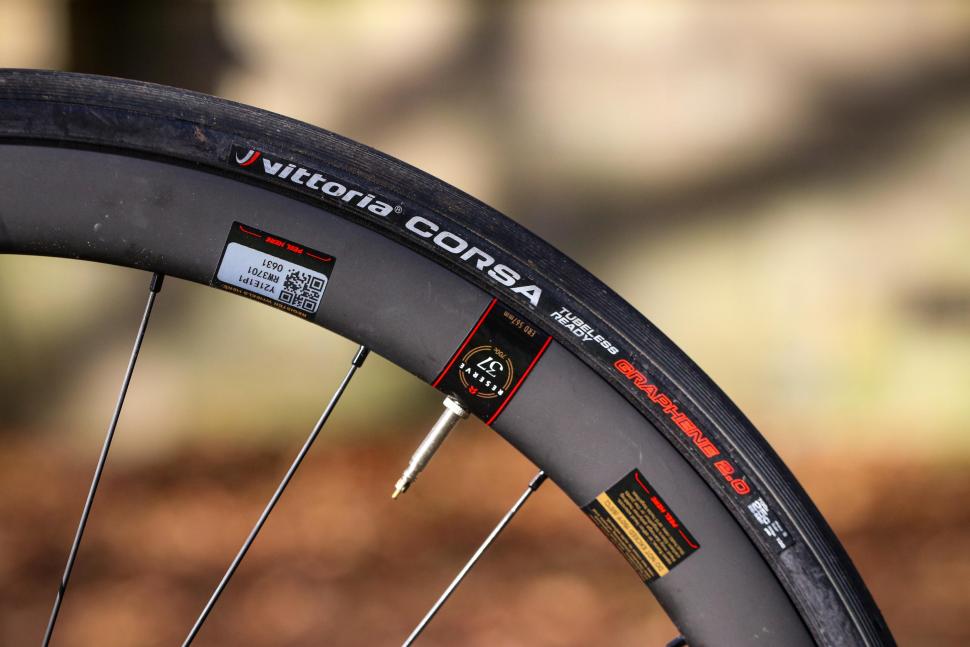
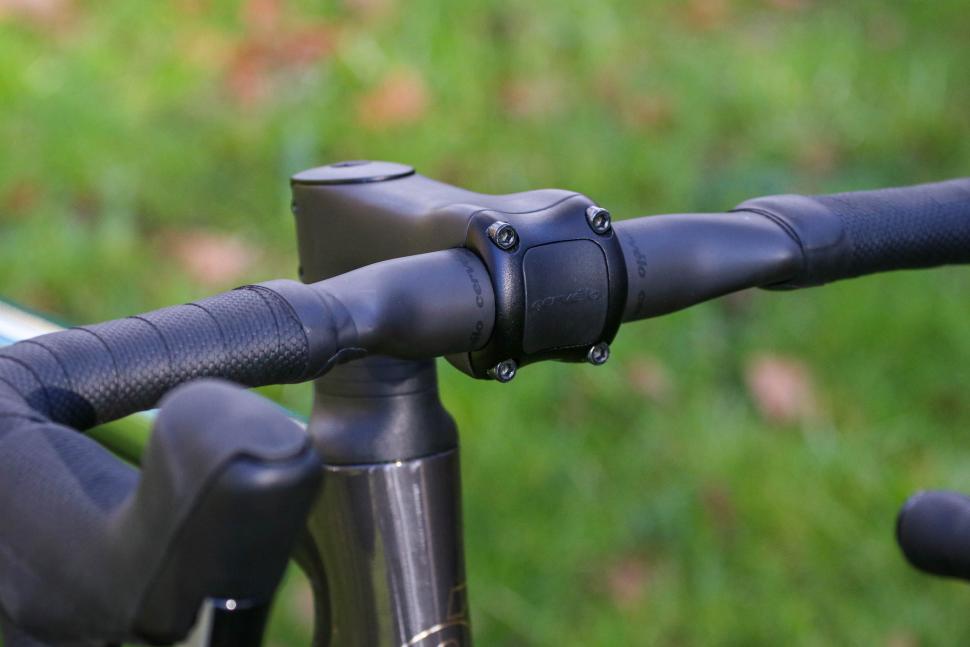

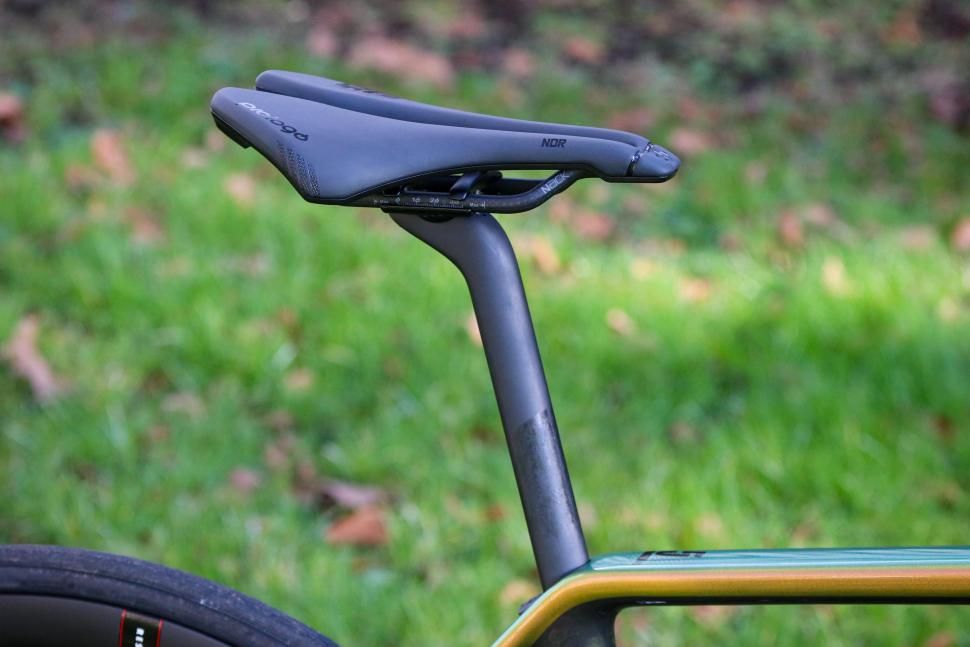



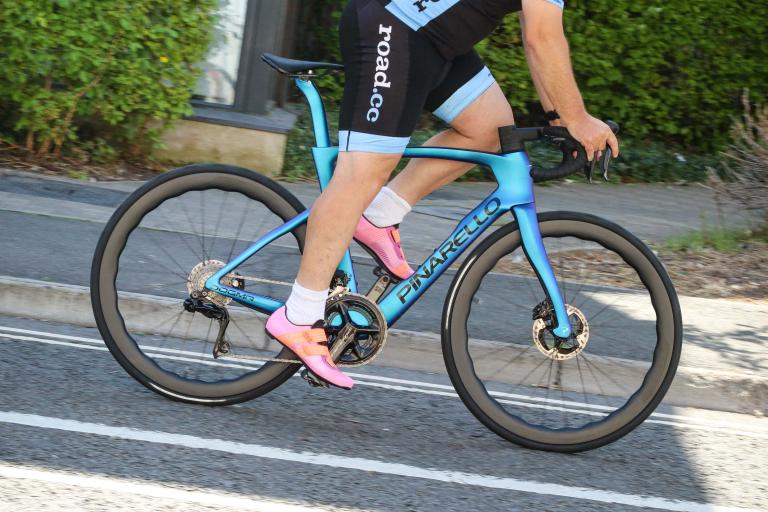

Add new comment
13 comments
Saddle in the photos isn't the Prologo Scratch M5 PAS Tirox. It's the Prologo Dimension NDR Nack.
I know the goal posts have changed somewhat regarding weight, but 7.5kg out of the box is pretty good these days, especially using the heavy Force AXS crankset.
My Supersix Force AXS build was 8.2kgs out the box!
Thankfully the Aethos pushes the goalposts in the other direction. I can't imagine anyone choosing this Cervelo over the Aethos.
But I do agree with your point and I'm curious why many recent bikes are so heavy. Exactly where is the ~0.7kg difference between the Aethos and R5 hiding?
Maybe I am missing something, “easily adjustable cockpit”.
When I ordered my last bike I was able to spec the bar width and stem length to suit me, thereby removing the need for an easily adjustable cockpit, but there is no reference in the article to such options.
I presume that's referring to stack height and bar angle, not so easily adjustable on fully-integrated cockpits.
Something just doesn't look right about those stem spacers and I can't quite put my finger on it.
Some manufacturers have the internal cabling design sorted, or at least it looks good on the particular frame but on this Cervelo it looks a bit of an afterthought.
I think the spacers themselves are fine. Certainly a nice mix of thicknesses to tune the 'bar height. However that headset top cap below them looks really bulbous.
To remove a spacer, do you have to disconnect hoses?
From what I can see, it looks like the spacers are splittable, so hopefully no hose disconnecting required.
Thank you.
Being the luddite I am. I originally asked about cables too, doh!
Not that I could ever afford one but it is nice to see a "superbike" that has a sensible close to 1:1 low gear ratio rather than assuming every purchaser has close-to-pro fitness levels and doesn't need anything lower than 36-28.
It has taken a long time for it to dawn on bike manufacturers that their market differs little from car manufacturers when it comes to every day riders. Round here, the roads are full of high performance, overlarge cars sitting in garden centre and supermarket car parks. Even a typical midrange car is way beyond the needs of its lifetime (I've been to Germany and not got within 40mph of the car's top speed). I'm amazed that you can't get Dura-Ace with a 42 tooth rear cassette and a long enough cage to go with a compact - it would sell like hot cakes.
In my time as a bike mechanic, I don't think I ever saw a high-end (price-wise) bike paired with a high end rider. The top racers in my club have very good bikes, but they don't spend stupid money on their bikes.
We were at a cafe on a wet winter's day and we saw two top end Scandanavian time trial bikes parked up. We looked around for the racing snakes that would go with them and there was no one obvious. Later two Woganesque figures appeared. 10 grand+ bikes on a windy day popping out for a coffee on the most inappropriate bike for the conditions. Sigh.
Quite agree. Manufacturers are fools to themselves in this respect because the people most likely to have the money to buy superbikes are usually fiftysomethings carrying a few superfluous kgs, arthritic knees etc who need a good low gear for hills. On the plus side it reconciles me to not having many of these bikes because rather than think I can't afford one, now how can I add £10k to the mortgage without Mrs H noticing, I can think well, wouldn't suit me anyway!